Cards In This Set
| Front | Back |
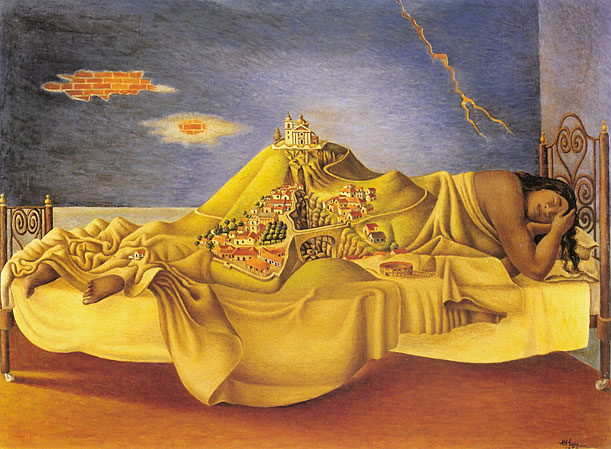 Antonio Ruiz |
Antonio Ruiz, Sueno de Malinche, 1939-He’s a mexican artist
-Despite
the fact that she was considered as a trader to the mexican race, she is also
considered the mother of the race
-Due
to the location of the colonial town on the hill;s slope, the female form makes
her an earth mother and the generatricx of the colonial
-Placed
woman in the double role of becoming both the painter and the painted, in
contrast to her traditional role as the object of someone else’s gaze
-
Use of the female body in an objective form
-
Juxtapose of unexpected forms
-Malinche=
imp. Figure to Cortez (his translator), trader b/c she was indigineous (spoke
Aztec & ucatec), and worked as a translator for Cortez
-
Malanchista- betraying
-
Mexicans who reside more with Northern U.S. ideals than Mexicanidad
-
She bore children to Cortez
-
She is the foundation of Mexican identity
-
Exaggerated hip becomes a mountain
-Christianization
of Mexico (on a mountain)
-
Mezdiso identity= la raza cosmic
-Dual
identity= ongoing theme of Mexican culture
-backdrop=
wall that’s also a sky, dream about mezdiso identity
|
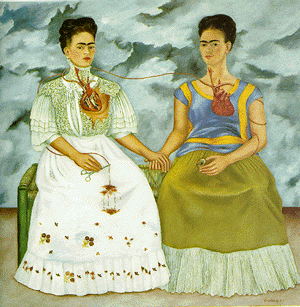 Frida |
Frida
Kahlo, Las dos Fridas, 1939This painting depicts the traditionally Mexican minded, traditionally Mexican dressed Frida hurt and exposed, sitting next to, and holding the right hand of the strong, independent, cosmopolitan Frida, who is obviously the protector of the weaker, more traditional Frida. The hearts of both Fridas are visible, and the heart of the traditional Frida is cut and torn open. The main artery, which comes from the torn heart down to the right hand of the traditional Frida, is severed. She uses surgical pincers to try to stem the flow of blood, yet it continues to drip down onto her white dress, forming an expanding crimson pool. The heart of the strong Frida, however, is fully intact and is feeding lifeblood through a connecting vein to the weaker, traditional Frida.
The Two Fridas is the woman she became when she realized that her society's traditions and cultural expectations were unreachable and unrealistic. The traditional Frida in the portrait does not convey any physical disability. Instead, what is laid before the audience is a woman whose traditional clothes are torn and stained, her shattered heart exposed. What is seen is a woman beaten down by the life she was expected to live. The traditional Frida’s saving grace is that the strong Frida recognized these quixotic demands for what they were, and adjusted her life accordingly. -Personal & surrealist/ smaller and more intímate - Figures are in culturally distinctive outfits; Tehuantepec clothing, folk cultura - The ego vs the id - back drop= ambigous space -Response to her divorce from Rivera - Frida in a Tehuana dress whom Rivera loved and a Victorian dress which he no longer loved - The double image serves as a surrealist device |
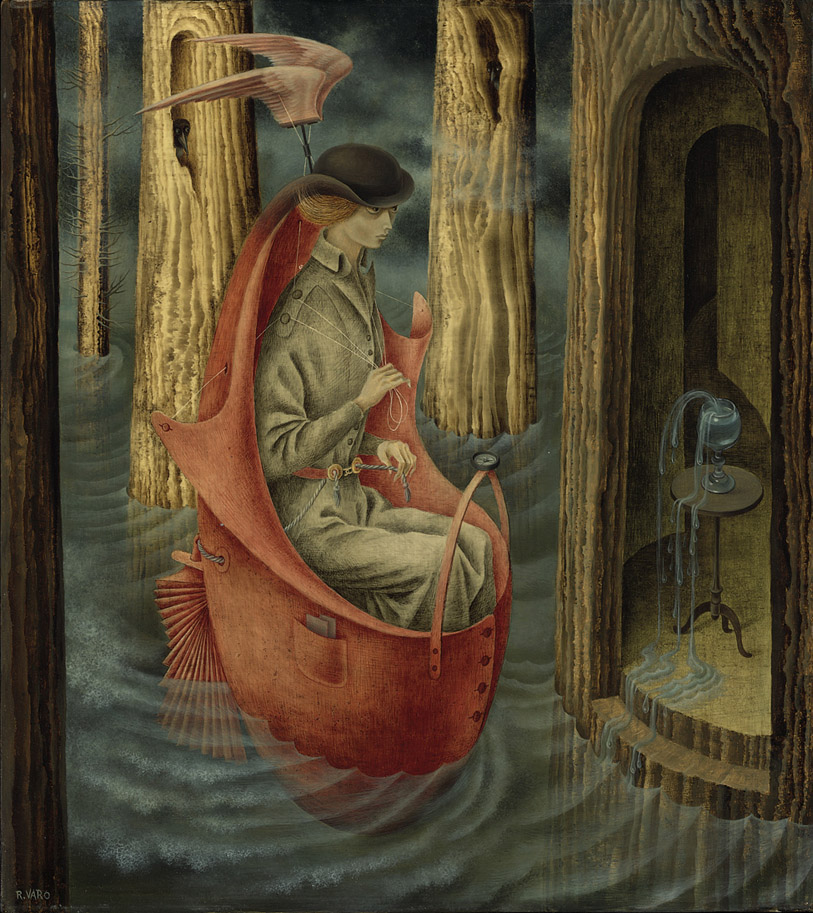 Remedios |
Remedios Varo, Exploración de las fuentes del
rio Orinoco, 1959fantasy environment, personal exploration
|
|
Andre Pierre
|
Andre
Pierre, Offerings given to the Spirits of the Sea: Ceremony for Agoue, 1969
-
Animated by colorful forms
-
Agoue= god of the sea
-
The whole scene is masked in
Christian symbolism
|
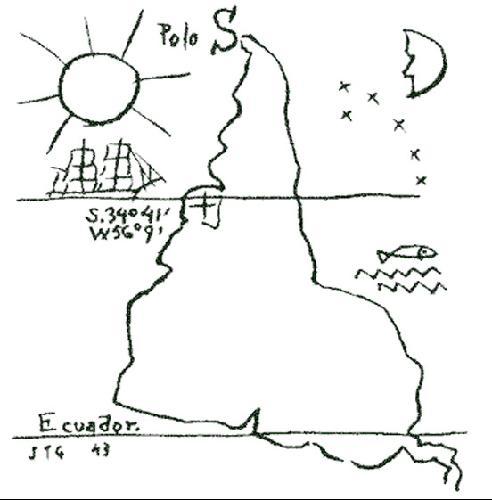 Joaquin |
Joaquin
Torres-Garcia, The North is The South, 1935 -Do
something original, “something of our own”
-
Statements, books, articles, manifestos, radio- searching of identity through
abstraction
-
Behind images are powerful ideas of searching and making something grand
-
School of the south bc our south is north
-
Turns map upside down
-North
Vs. South phenomenon
-
Potentially could be talking about Mexico as well
-
Has its own reality
-
Interested in Indian legacy, decolonized art- looking beyond colonial pd. to
uncover ancient andean- Establish a school of arts and crafts
-
Cubist grid
-
Incan art- little parts that fit to make larger whole
|
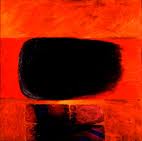 Fernando |
Fernando de Szyszlo, Inkarri, 1968A deep red field above an alterlike band identafiable as feline paws joined at the center. Historical contexts-ancient peruvian and brazilian art depend on feline super natural powers.The floating black image is preserved by balance of shape and color. Distinct from the flat colors of U.S. artists.Tones of rose,black, pink, orchard, red and plum reflect that of ancient textiles. These colors reflect the somber mood of conquest and the defeated inca civilization.
|
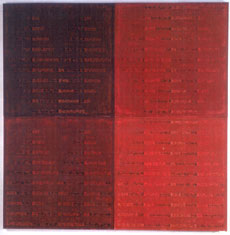 Cesar |
Cesar Paternosto, T’oqapu, 1982
|
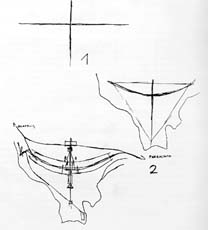 Costa |
Lucio Costa, Plan of Brasilia, Brazil,
1956-1960-
600 miles
from coastline
-
Clean
slate , dry, no vegetation
-
Shape is
an airplane-aro-dynamic/progress
o
Opens up
the world
-
Socialist
principles-The main goal of socialism is to dispel class distinctions by turning over control of industry to the state. This results in a harmonious society, free of oppression and financial instability.
-
Great in
theory, but not in practice
-
Dehumanized,
ppl need an identity
-
Held
within an artificial lake
-
Urban plan
allowed for Little organic variation and
contradicted the nature of the avg. Brazilian
|
|
Nieymeyer |
Oscar Niemeyer, Cathedral, Brasilia, Brazil
1959-
Circular
structure composed of 16 ribs rising in the shape of an hour glass to form a
symbolic crown
-
Ringed by prívate
chapels which are decorated with flowers and cult symbols of candomble, the
Afro-Brazilian religión whose dieties are thinly disguised as Catholic saints
-
The
circular planGuided by the ideas developed in the 1950s, Kubitschek wanted the capital city to become a pillar of development in the north-east. Even though he did not find the ideal city, he decided to build nothing less than his original design. Niemeyer saw a compact and clean concept, a volume occuring with the same purity from any perspective and for times of deep religious expression.In the air born outside the structure of the earth is a cry of faith and hope, then, the gallery is located in semi-darkness to prepare the faithful to show religious order in the contrast of light and the external effects; the faithful depart from the world and are projected between the cathedral and the infinite spaces.Niemayer's communist and political trends had hoped that any future regime would be established in this Brazil. Niemayer's cathedral was designed so that when Brazil was succumbing to communism, the importance of his temple would not be diminished.
|
|
Pani |
Mario Pani & Enrique del Moral, Ciudad
Universitaria [UNAM], Mexico City, 1950-1953-
First
built in Mexico, capitalist form of industrialization and
internationationalization endorsed by Miguel Aleman
-
Ten-twelve
story tower
-
Utopic,
removed from the center
-
Massive
plan for new future
-
Vasconselos
creates a book- La raza cósmica
o
New youth
are given freedom of thought and to be trained
o
Manifestó about
mexicans- combination and unique blood-spanish and indigenous
|
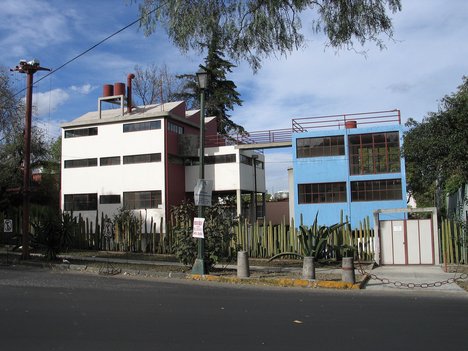 O'Gorman |
Juan O’Gorman, Studio for Diego Rivera, Mexico
City, 1930by combining organic Mexican architecture and architectural murals with functionalismThoughts such as the rational use of materials, analysis of the functioning of ideal spaces and the adequacy of them to accomodate activities that took place within them - ideas that were radical at first but eventually were assimilated into the worldwide architectural community. These houses were made possible with minimum cost and effortwhich is one of the first examples of functionalist architecture.He created a home made up of two concrete blocks smooth, independent of one another and linked by a narrow bridge that joins the rooftops. A block is red and represents Diego. The other is blue, representing Frida. The bridge that unites them is the bond of love between them. It also complies with the 5 points above Le Corbusier, with the house on stilts, free plants, free facades, garden terrace and elongated windows..
|
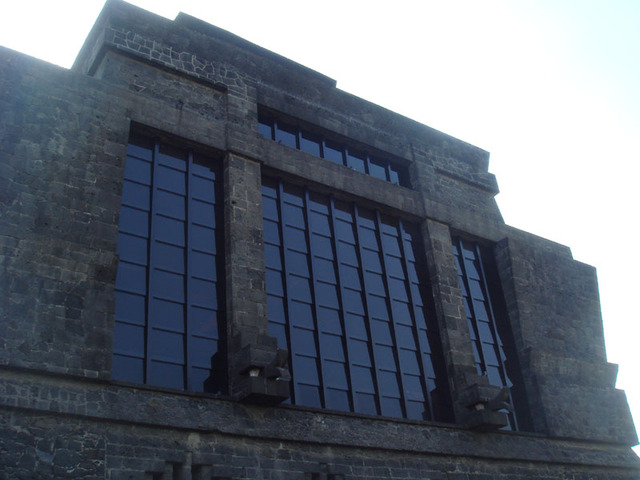 Diego |
Diego Rivera, Anahuacalli, 1944-1964-
Firm
reference to pre-hispanic architecture
-
Museum
Stone cold floor
-
Snake
heads coming out of building"Valley of Mexico.encounter an ominous Totonic jaguar or an exquisitely carved armadillo. Some treasures include tiny masculine and feminine figurines, water vessels and animal carvings: more than 2,000 pre-Hispanic pieces are housed here, bathed in the changing hues of natural light.
|
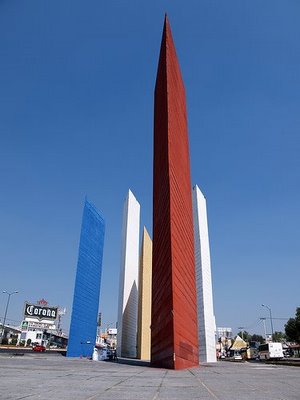 Mathias |
Mathias Goeritz and Luis Barragan, Cinco
Torres, 1958-
5 towers
to serve as a billboard for satélite city
-
Tallest is
200 ft. Tall
-
Stand as a
median of the highway
-
Talk to
middle class- those who can afford cars or are driving into Satelite City- only
those who had Money –suburbs-suburbia
-
Inspired
by Italian medieval towers
-
For some
people only meant big advertisement
-
Addresses
issues of scale and shifts and perception with no romantic connotations
-
An
expression of man’s spiritual condition at a particular time
-
Introduced
dangerous foreign influences
|
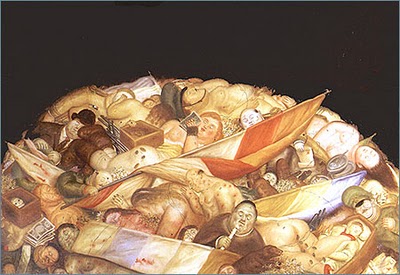 Fernando |
Fernando Botero, Guerra, 1973-
Compact
mass of dead
-
Parodying
medieval allegories of greed, piety, and hypocrisy have been caught in disasteras drug-fueled guerrilla warfare raged in Colombia, his work became much darker (though unchanged in style) as he created paintings and drawings of the period's kidnappings, massacres, torture, and death.
|
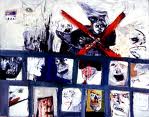 Luis |
Luis Felipe Noe, Closed for Sorcery, 1963-Distorted, isolated place
- Chaos of space and and clear
imbalance in upper portion
- Main figure is off center
- Red center- crucifix- face may
be Mussilini
- “One must understand the chaos
of which we live in” – Barnitz
- You can use symbols to express
yourself (America)
- “Long live chaos”Noé embraces both political and human chaos in his work, fearlessly entering the eye of the storm.
|



